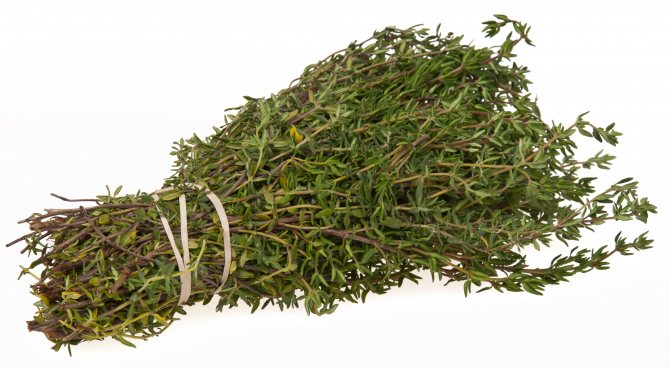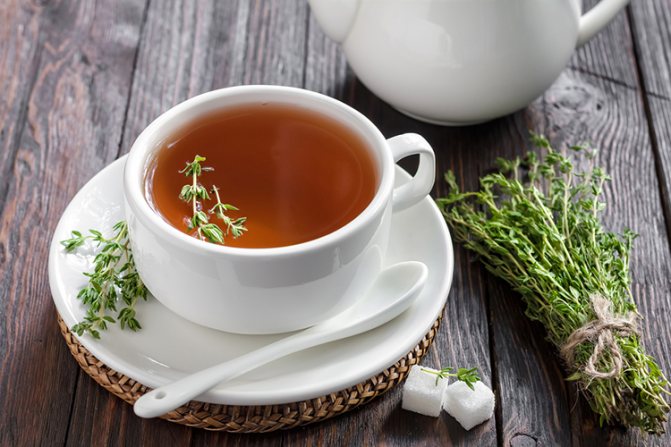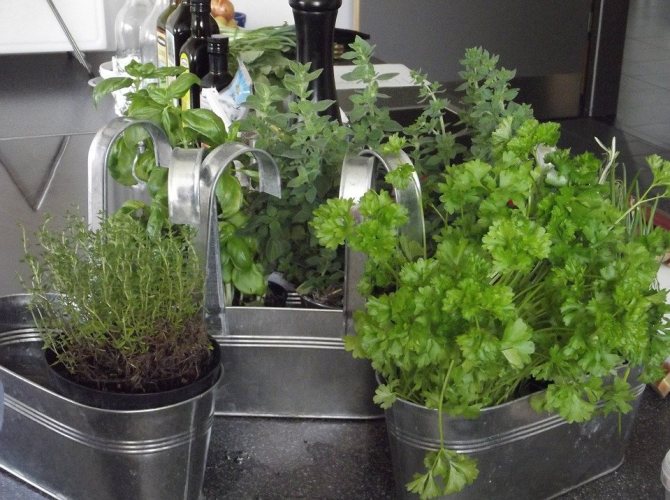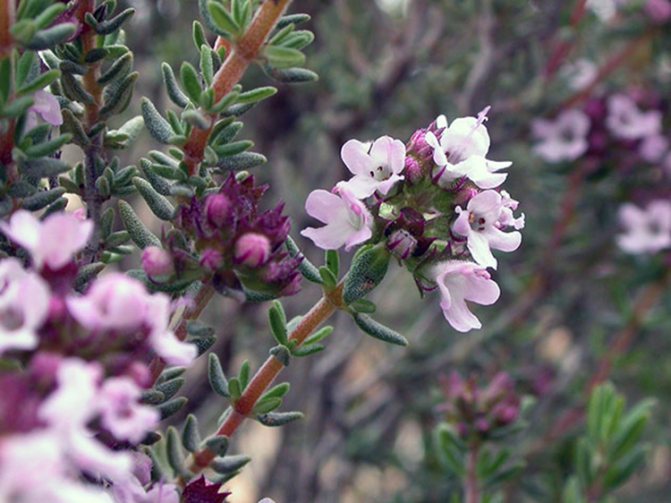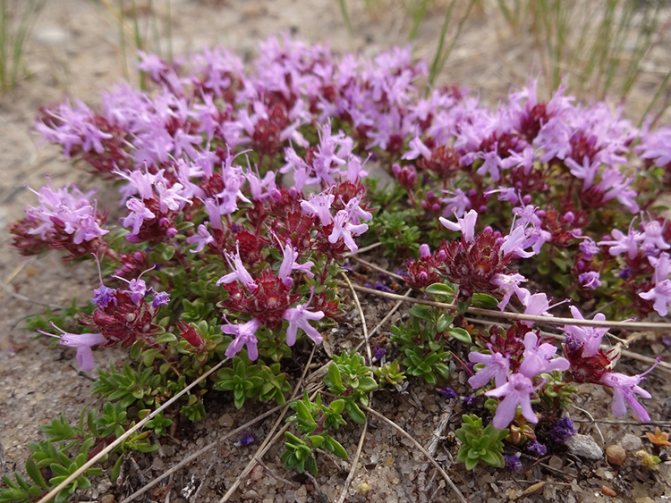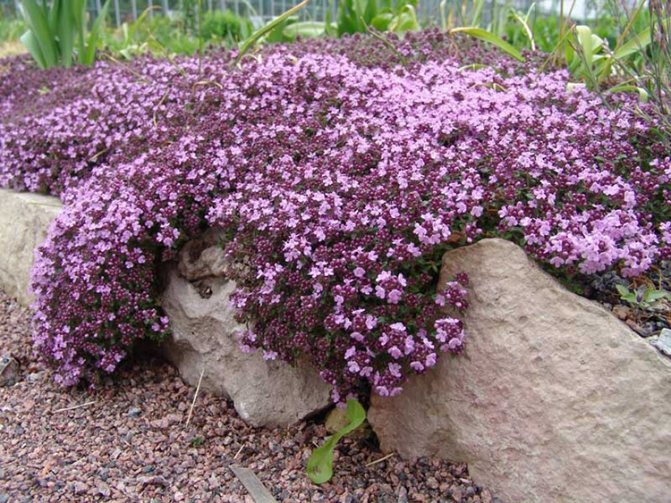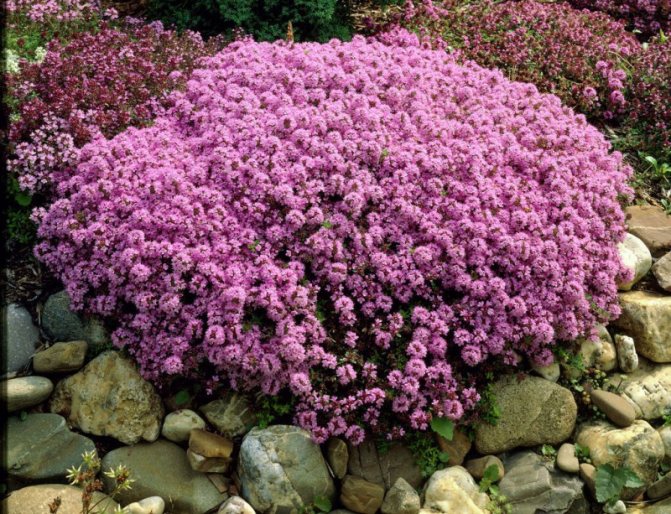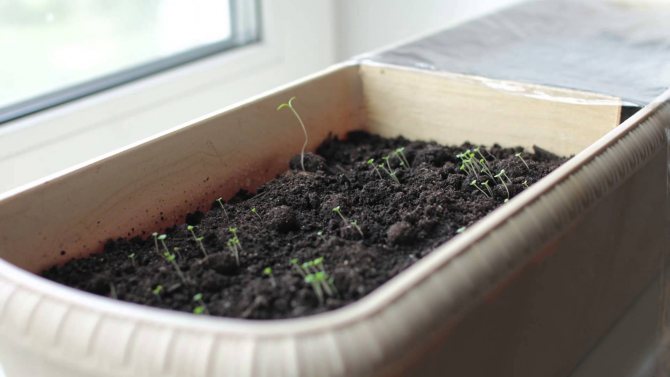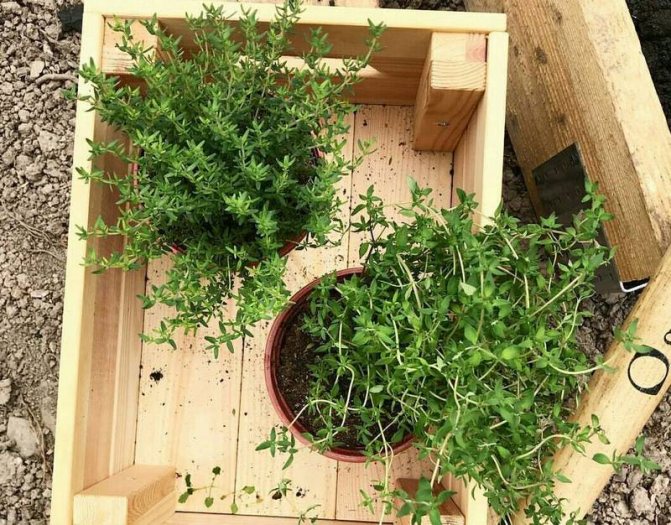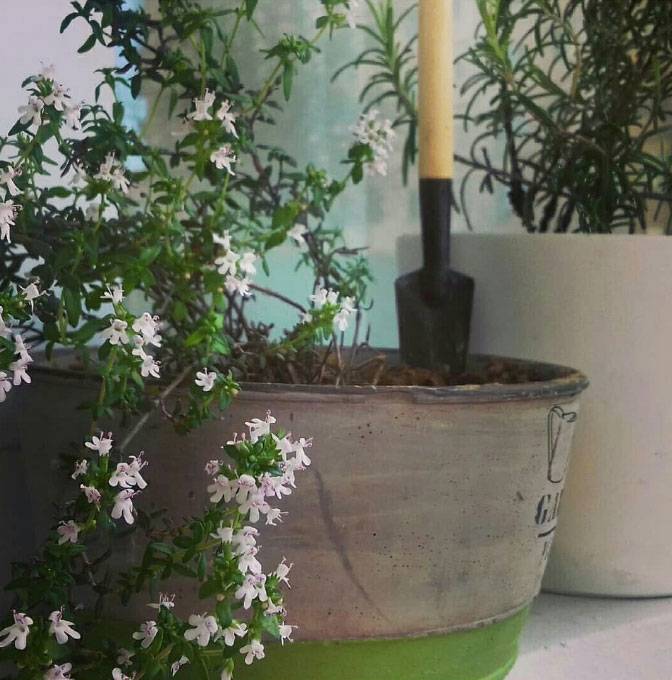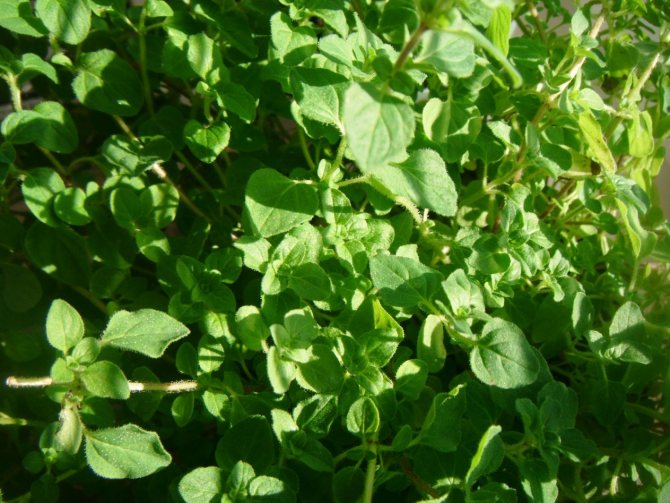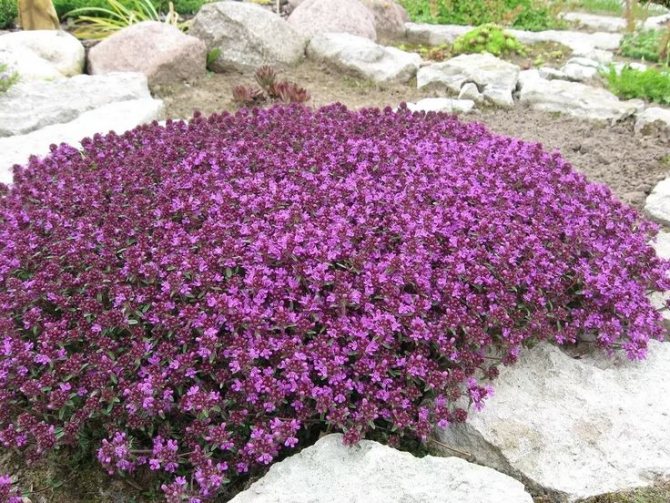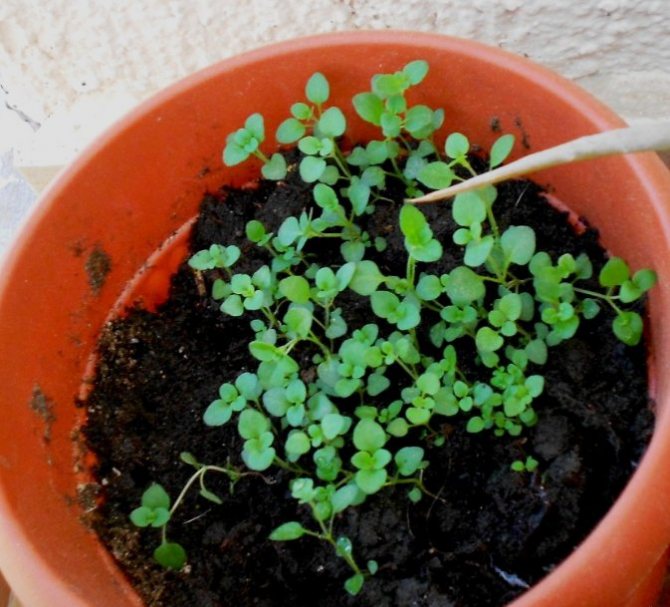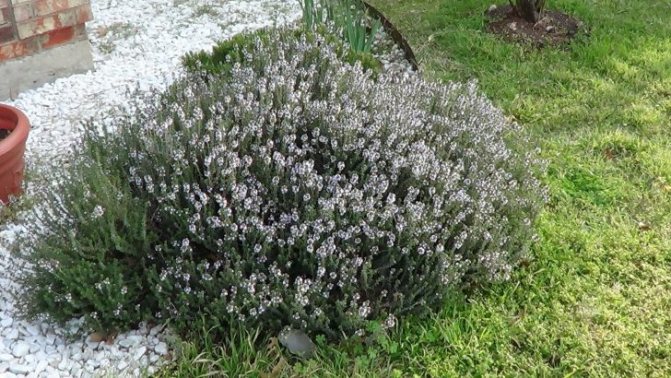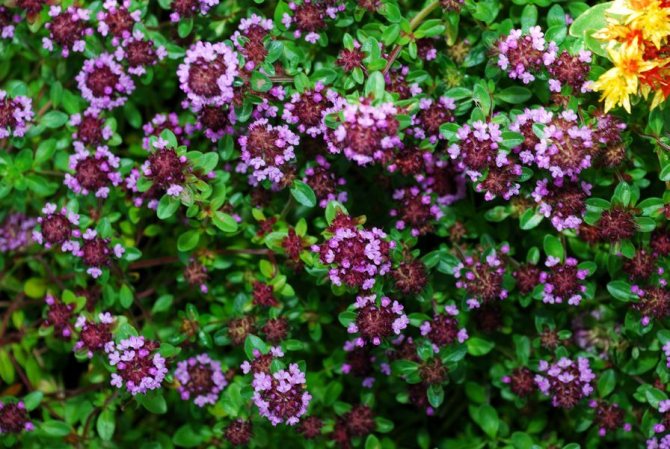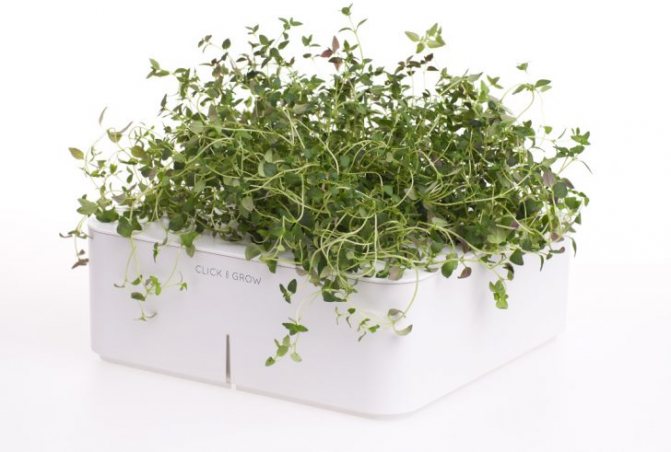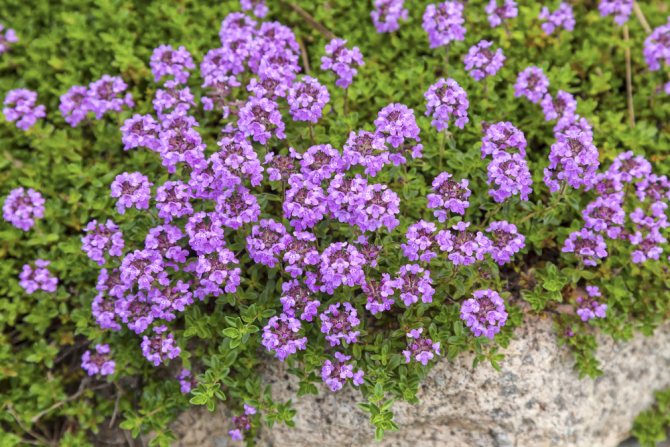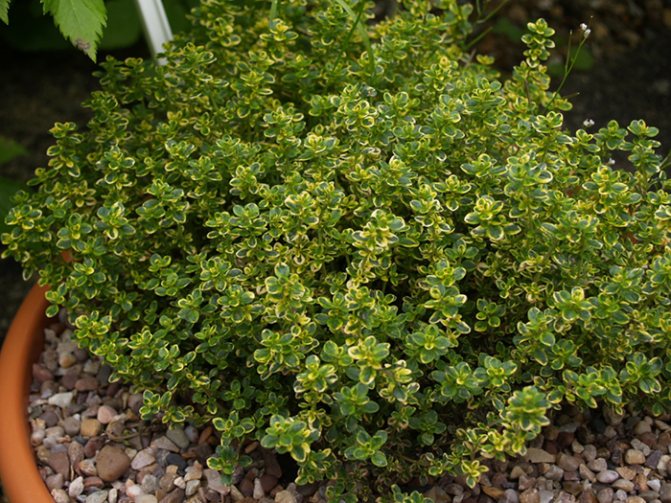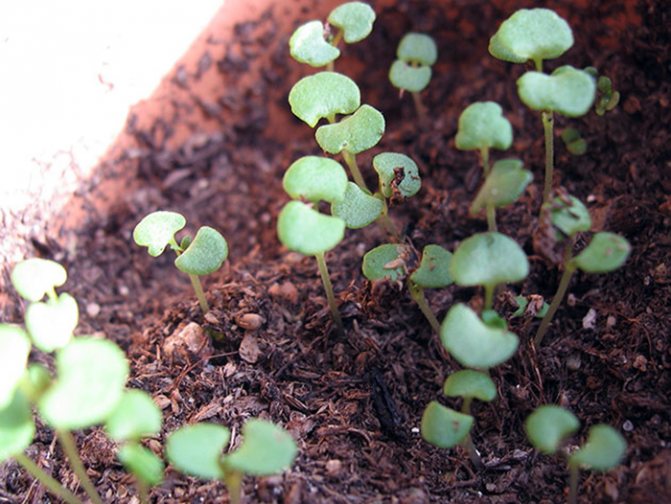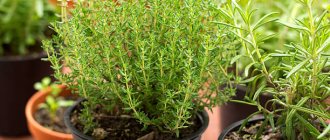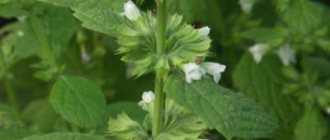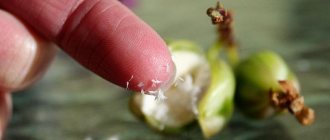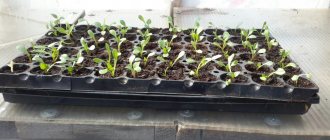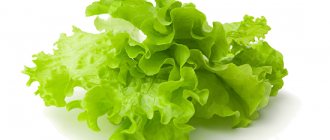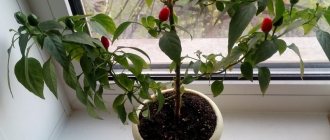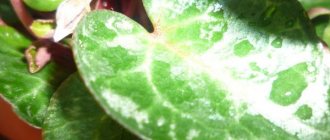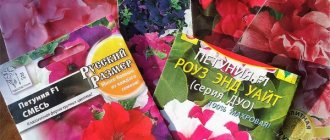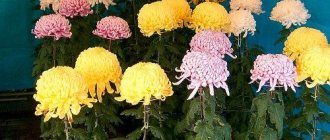Thyme seeds and leaves are used as a condiment and additive to healthy teas. Many people know this culture as thyme, however, this is not always true, since in this case we are talking about one of the many varieties.
The shrub, despite its rather large size, can take root not only in the open field, but also at home. Beautiful flowers, a variety of uses, a pleasant lemon scent - these are just a few reasons why you should plant a plant in a pot on a windowsill.
Suitable varieties
The most unpretentious, suitable for growing at home are the following types of thyme:
- ordinary;
It is characterized by small leaves pubescent below, with white or purple flowers.
- citric;
It has a lemon scent and yellow (in young plants) or light green (in adults) foliage.
- dwarf;
The bush of this thyme grows no higher than 5 cm. It grows densely and blooms with white, scarlet and red flowers.
- creeping;
It is characterized by creeping stems and bright pink or crimson flowers.
- rainbow;
A beautiful variety that is profitable to grow on a windowsill. Why? - It is he who is recommended to use as a seasoning. It has purple and pink flowers.
- Bogorodsky.
It has slender creeping stems with mauve flowers. It is characterized by a bright aroma and a bitter taste.
Features of growing in the suburbs
The shrub is appreciated for the fact that it combines the properties of a beautifully flowering ground cover, fragrant spicy greenery and decorative decoration of portable flowerpots and pots. Features and methods of growing thyme in the Moscow region depend on what goals the gardener pursues:
- On the windowsill. This method of growing allows for a fresh spice on the table all year round. Thyme is grown on the southern windowsills, pinching the inflorescences, in order to form as much green growth as possible, which is used in cooking.
- In containers and bowls. Some varieties of thyme are capable of forming thick, brightly colored inflorescences. Neat, bright bushes of the plant serve as an excellent decoration for portable flower beds.
- Outdoors. The most common way to grow thyme. As a ground cover shrub, it is used to create mixborders, solo or serves as a bright background on alpine slides, spreads along the paths.
Preparing for planting thyme at home
For the correct planting of the plant, we adhere to the following steps and recommendations that will help to properly grow thyme from seeds or cuttings:
- Choosing a container. To grow thyme indoors, it is recommended to give preference to clay pots or small plastic boxes. Thyme has a small root system, so a shallow pot is most suitable for planting. Its maximum height should be 15 cm, otherwise the plant will not absorb enough water from the soil and it will rot. Do not forget to scald the surface of the pot with boiling water. At its bottom, be sure to pour a layer of expanded clay or any other drainage, 2-3 cm high.
- Preparing the soil. We choose a light and loose earth.Of the ready-made soil mixtures, the one that is intended for growing cacti is well suited, we first mix it with black soil (2: 1). You can also mix peat, turf and sandy soils (1: 1: 1).
Harvesting
At the final stage of the thyme life cycle, the ripe crop is harvested. For this, all shoots with leaves are carefully cut with a knife. It is recommended to carry out the procedure in the second half of summer, when flowers appear on all plants. The harvest harvested during this period is considered the most fragrant and therefore it is better to use it for cooking. All harvested spices should be stored in an airtight container so that the sun's rays do not fall into it.
How to grow thyme on a windowsill
You can plant thyme at home in the following ways:
- seed;
- by cuttings.
How to grow thyme from seeds at home
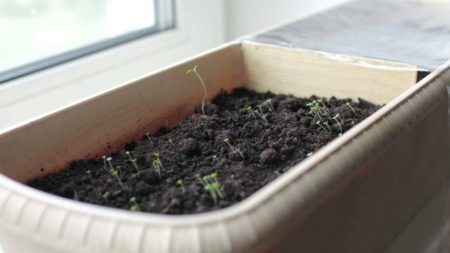
Growing thyme from seeds is easy. To do this, pour the drainage layer into the pot. Mix the prepared soil with vermiculite so that moisture is better retained in it. We moisten the soil and sow the seeds. Further, we cover them with earth, the layer of which does not exceed 1 cm.
For seed growing, we place the pot in a shaded place so that direct sunlight does not burn the young sprouts. We spray the soil regularly. As soon as the seedlings emerge, we remove a small number of them to provide space for the full growth of the plant.
Reproduction methods
Most actively, creeping thyme reproduces on its own. The creeping stems of the plant have the ability to quickly root, which allows the shrub to spread more and more throughout the site every year. Because of this feature, gardeners artificially limit its growth in organized flower beds. In the case when it is necessary to artificially propagate thyme, resort to the following methods:
Seed propagation
You need to plant seeds 70 days before the soil on the site warms up above 15 degrees. In early or mid-March, planting material is sown in containers with moistened soil (a mixture of equal proportions of peat and sand). Small seeds are lightly sprinkled with soil, covered with foil and placed in a warm place until shoots appear. This takes 1.5 to 2 weeks.
When the first shoots hatch, the container is transferred to a bright place. As the seedlings grow, it is necessary to thin out the sprouts and monitor the moisture of the earth. At the age of 70 days, the seedlings are ready for transplanting.
Propagation by cuttings
Creeping thyme is easily propagated by cuttings. To do this, select strong, developed shoots that have reached a length of 10-12 cm. There should be no inflorescences on the trunks. They are carefully cut with a sharp secateurs and placed in river sand. Having previously moistened the soil from a spray bottle, the cuttings are covered with a film. Within 2 weeks, the formation of roots occurs and the plant can be planted in a permanent place. In the process of rooting, it is necessary to weed the soil from weeds and prevent waterlogging of the soil.
Reproduction by dividing the bush
An adult thyme bush is dug out of the ground and part of the plant is separated along with the roots. Division should be carried out with caution, trying to minimize damage to the small processes of the roots. For better survival, you can treat the root system with Kornevin. This must be done strictly according to the instructions. The separated part of the shrub is planted in the ground under a special coating or a glass jar.
Caring for thyme on the windowsill
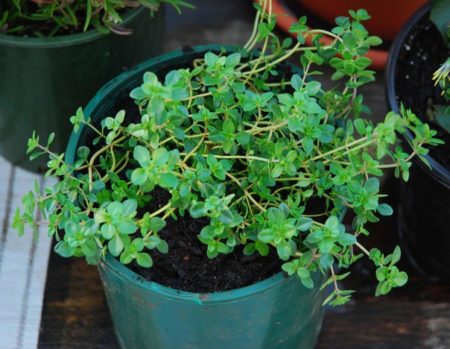

To properly care for thyme, you need to take into account the characteristics of this plant. Thyme can safely "boast" of its drought resistance, so it does not need frequent watering. We carry it out as the soil dries, but so that it does not completely dry out.Since the spice feels good in loose soil, caring for thyme at home includes regular loosening of its surface. Do not forget to provide adequate lighting and adhere to the required temperature regimes.
So that the thyme in the pot grows more densely and luxuriantly - periodically cut off its shoots. We carry out this procedure in the first months of spring and after the end of flowering.
If, despite regular watering, the plant dries up, we feed it with mineral fertilizers.
Care basics
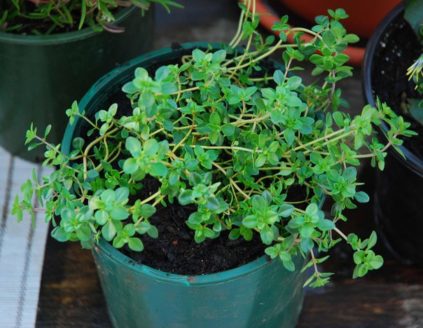

Special care for thyme is not required throughout the year. The plant, even in the wild, is found in the harsh conditions of cold climates and in arid regions. To grow thyme in a pot and reap a rich harvest, it is enough:
- observe the temperature regime;
- monitor the lighting;
- regulate watering throughout the year;
- feed periodically.
Each of the ways to plant thyme differs in its subtleties of further care. When germinating the cuttings, special attention should be paid to feeding with formulations that stimulate root growth. This will help the plant through the winter. It is necessary to fertilize after the appearance of the first greenery, then once during the winter and after that according to the scheme that was chosen for the "adult" bushes. If seeds are germinated, it is necessary to feed them with growth stimulants of the green part.
Watering in the cold season is reduced to once every two to three days. In summer, it is optimal to moisten the soil in small portions daily. Fragrant herbs will grow faster if the humidity is high. Therefore, you can put plates of water on the windowsill next to the pots, which will constantly evaporate.
Sometimes the owners of mini-gardens on the windowsill cannot understand why the bush has withered foliage with proper watering and frequent feeding. The reason may lie in the insufficient saturation of the soil with oxygen. The upper layers should be constantly loosened, especially under young plants. This way, the roots can get enough oxygen. If the humidity in the room is too low, there is no way to put a humidifier, you can mulch the plantings.
If we grow thyme for several years in a row, it is necessary to prune the bushes once a year. This will allow you to form a denser "crown", get rid of old and withered shoots, making room for new ones. It is necessary to remove all vegetation with sharp scissors, leaving only the woody trunk.
On a note!
It is very important to work with a quality sharpened tool. Blunt knives and scissors literally tear the tissues of the plant, in the future the branches may not recover.
You can harvest at any time, however, greens accumulate the greatest amount of nutrients before flowering. When the first buds have just appeared, but have not yet opened, you need to cut off as many leaves as possible. From such raw materials, healing infusions and healthy teas with a strong aroma will be obtained. For culinary purposes, you only need a couple of leaves, which can be taken at any time of the year. The last cut is dried before hibernation. Flowers are harvested immediately after the opening of the buds, you should not wait for them to wither and even more so to fall. When harvesting, you must act carefully, hold the trunk of the bush, especially if it is a young plant. Root damage can be fatal.
Testimonials
Anna
I planted 2 thyme bushes on the windowsill. Now the whole family drinks fragrant tea all year round. We cut off shoots from one plant for harvesting for the winter, and use the other for cutting fresh leaves. Thyme tea is a great help to cope with colds and energizes for the whole day.
Marina
Real herbal tea in stores is expensive, so I prefer to grow thyme on my own. Moreover, landing and leaving are not difficult at all.I grow plants by cuttings, cutting them off at the very root. Such shoots are large and strong, so they take root well and bring a crop quickly.
Briefly about thyme
The main features of thyme:
- prefers sandy, rocky soil;
- grows well on the ground with an admixture of chernozem, in the steppe and dry forests, on the rocky slopes of mountains and hills;
- loves a lot of sunlight;
- hardy;
- drought-resistant.
The value of thyme, first of all, lies in its medicinal qualities, but a pleasant aroma also adds advantages to this plant, especially among summer residents and gardeners. It is put in food as a seasoning, tea is brewed, added to pillow stuffing, used in perfumery. Thyme has many bactericidal and expectorant properties, which make it possible to use it in the treatment of various diseases. A wonderful honey plant, bees never bypass it.
Wild thyme has been cultivated for a long time so that it can be grown not only at home or in the garden, but also on an industrial scale. It takes root well and multiplies easily, unpretentious. You can sow with seeds, and also divide the bush.
Due to its undemanding nature, the cultivation of thyme is possible on almost any soil, but still prefers light nutritious, non-acidic substrates. The clayey soil is completely unsuitable for him, since the stagnation of water in it is detrimental to thyme.
Diseases and pests of thyme are not terrible. The second are scared off by its spicy aroma, it is also resistant to diseases. Only improper growing conditions and care can cause harm, for example, gray mold damage due to waterlogging. To prevent this from happening, you need to constantly monitor the moisture level and water sparingly.
Occasionally, young shoots of thyme can spoil aphids, which are easy to deal with with the help of such a solution: dilute 1 tablespoon of soda ash in a liter of water, add laundry soap, strain and process infected bushes. Poisons are undesirable, since the thyme is used for food.
Creeping thyme: varieties and varieties
Creeping thyme belongs to the species of low-growing dwarf shrubs. The height of the plant rarely reaches more than 15 cm. It is called so because of its peculiarity to creep along the soil, forming a soft fragrant carpet. The flowers have a bright purple hue and are collected in capitate inflorescences. This type is most often used by gardeners. It is used in landscape design because it blooms continuously all summer. The most common varieties of thyme are:
- "Colchis" - has light lilac flowers and spreads low (10 cm) on the ground;
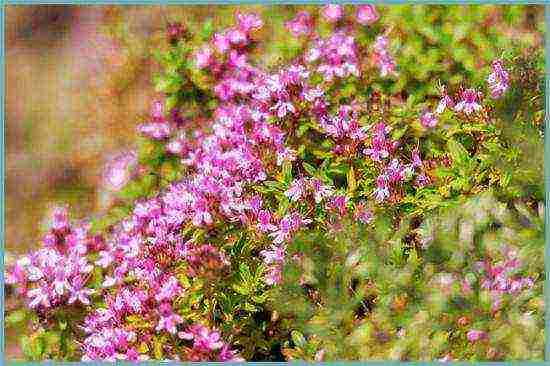

Variety "Kolkhida"
- "Donna Valley" - grows with a dense carpet, the leaves are bordered by a yellow stripe, the flowering is constant pink;
- "Silver Queen" - forms a rather high (20 cm) loose carpet, gray leaves with white edging, densely arranged inflorescences have a lavender hue.
Creeping thyme belongs to the type of thyme, among which you can also find:
- Common thyme. A plant with a small growth of 5-10 cm. The leaves have a light down at the bottom. Flowering - white and pale lilac shade.
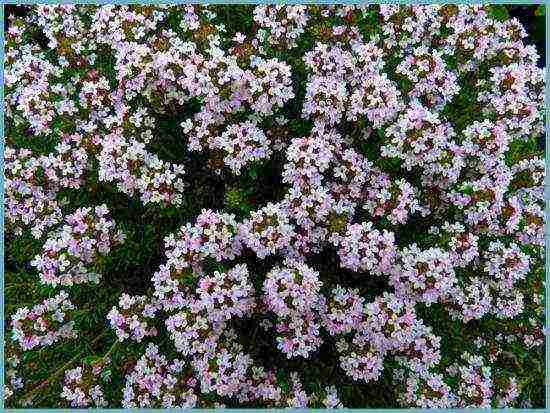

Thyme ordinary
- Lemon-scented thyme. It got its name due to its spicy aroma with subtle lemon notes, as well as the yellowish color of young leaves. The most popular varieties:
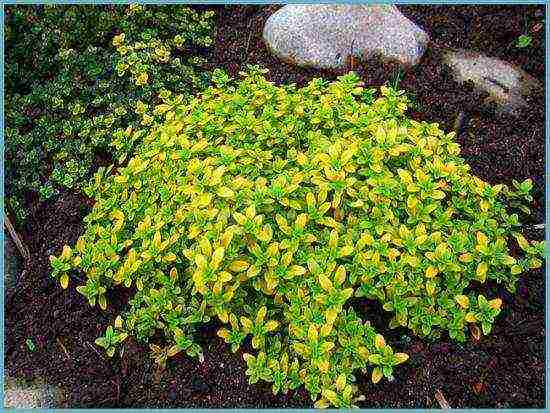

Lemon-scented thyme
- "Aurea" - has a bright yellow color;
"Bertram Anderson" - has green leaves covered with yellow spots.
- Early thyme. Blooms earlier than others, but also fades a little faster. In our country, there are such varieties:
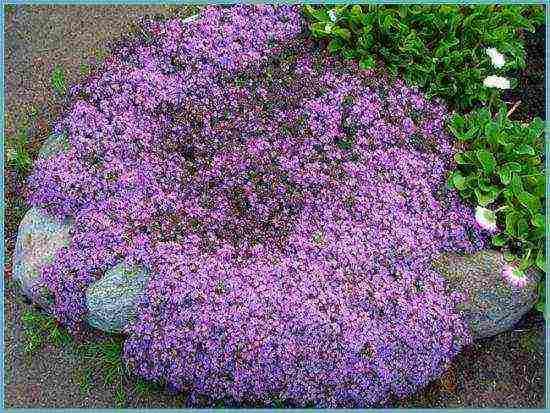

Early thyme
- "Minor" - has the slowest growth and small fluffy leaves;
"Pseudolanuginosus" - has sharp green leaves with excessive pubescence, blooms very profusely.
Planting a plant
Thyme is grown on light, loose soil.Sunlight has a beneficial effect on its development, therefore, planting in open ground is carried out in a well-lit place.
In order for perennial plants to take root well, the site must be carefully dug up in the fall. And add organic fertilizer (compost or manure). In the spring, when the weather is warm outside with a temperature of at least 13 ° C, the soil is dug up again and seeds are sown.
Advice! After the thyme has been sown, you can sprinkle the seeds with river sand. It will provide young shoots with additional nutrients and prevent water from stagnating on the surface.
After the seedlings sprout and grow a little, it is necessary to thin out the planting. The ideal distance between plants is 30-35 cm.
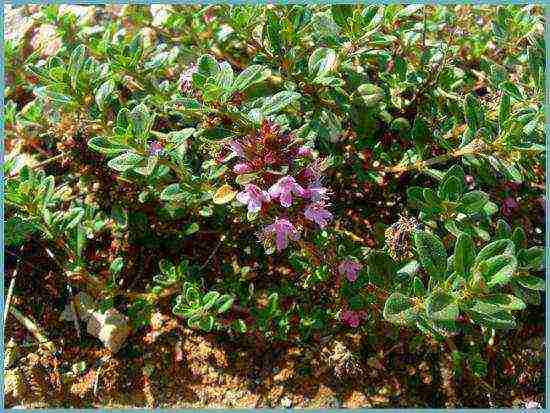

Fertilize and dig up the soil before planting thyme
In the open field, planting can also be carried out using seedlings. To do this, at the end of winter, thyme is sown in prepared trays. Watering the seedlings is carried out regularly, but not abundantly. Thyme rises under glass, which creates the effect of a greenhouse. After 3-4 weeks, the seedlings are taken out into the open air for hardening, and after another 2 weeks they are planted in a permanent place.
Diseases and pests
Thyme has a minimal chance of getting sick if you follow basic care conditions.
Problems can arise when the soil is waterlogged, which provokes the development of mold and rotting of the roots. In this case, the thyme is transplanted into fresh soil with good drainage. When transplanting, the damaged roots are cut off, and the healthy ones are washed with a weak solution of potassium permanganate.
Thyme rarely suffers from pests, but it can sometimes be affected by spider mites. Then it needs to be treated with drugs such as "Aktellik" or "Aktara". Prepare the solution according to the instructions for them and spray the aerial part of the plant with a spray bottle. Repeat the treatment after 5-7 days. Refrain from collecting greens for food for a couple of months.
Contraindications to thyme use
Since thyme has certain medicinal properties and is high in thymol, it is not recommended to get carried away by pregnant women. The seasoning can provoke an increase in uterine tone, which complicates the course of pregnancy.
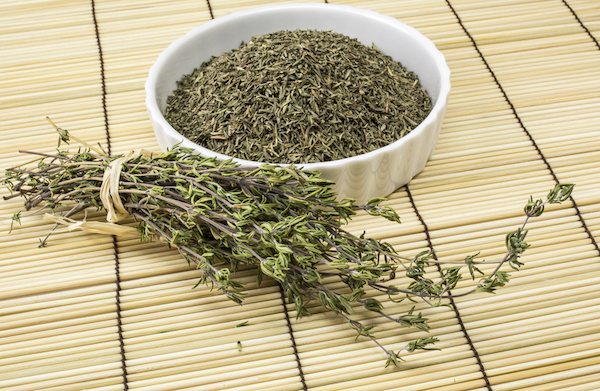

It is not recommended to consume thyme during pregnancy
Thyme is harmful for diseased kidneys, since thymol is somewhat toxic and will increase the load on the filtering organs. This is guaranteed to interrupt the course of remission and stimulate the exacerbation of the disease.
Thyme creeping in landscape design
Being a low semi-shrub spreading along the ground, in landscape design, thyme is used as a background for alpine slides and mixboards. But he can act there and in the lead role. Looks very good on scree.
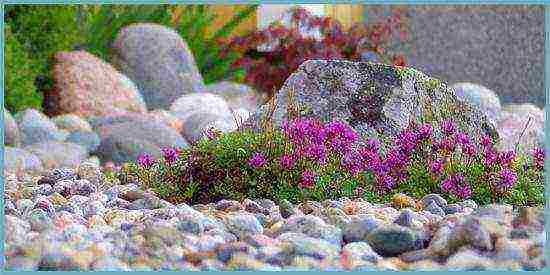

Rockery decoration with thyme
Growing creeping thyme will be a lot of fun for you. You can enjoy not only the beautiful appearance of the fluffy pillow bushes, but also its wonderful spicy scent. And what bright and rich photos are obtained against the background of thyme - just a feast for the eyes.
Growing thyme: video
Varieties of thyme: photo
Thyme is a perennial ground cover shrub that can be found on rocky slopes, meadows and forest edges. The fragrant, flowering plant has long attracted gardeners in Europe, Asia and North Africa. Its decorative appearance, long flowering and low maintenance requirements made it a frequent visitor to flower beds, alpine slides and rose gardens.
Thyme is prized not only for its decorative qualities. Its shoots contain essential oils, flavonoids, organic acids and vitamins. Due to its composition, it is actively used in cooking, medicine and perfumery.
It is not difficult to grow thyme in a dacha in the suburbs, even with minimal care.
Thyme.Growing methods at home and outdoors
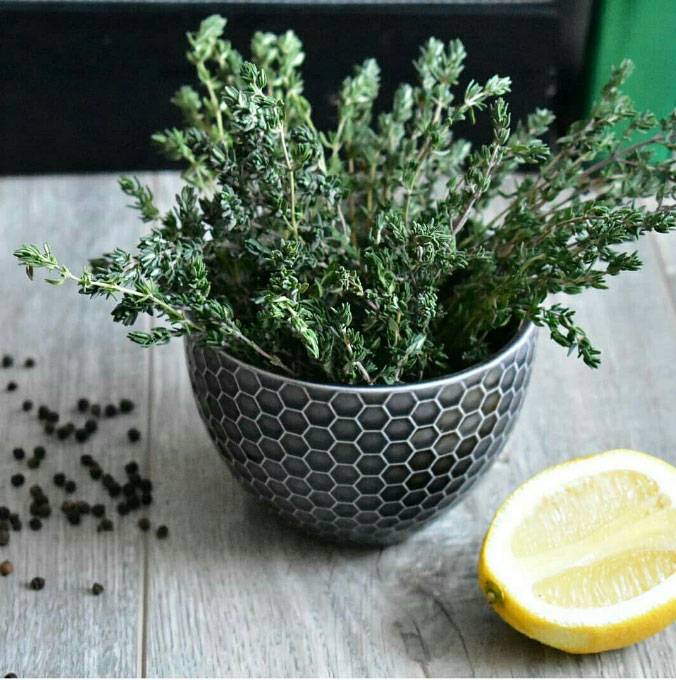

Thyme (thyme) belongs to perennial plants, grows in temperate climatic zones of Eurasia and Africa. A semi-shrub with rich green small foliage, fragrant inflorescences of pink, white and purple shades, with a pleasant smell of citruses, is known to the Slavic peoples as "Bogorodskaya grass". The medicinal properties, the presence of aromatic and essential oils in the composition of the plant, make it possible to use it:
- in folk medicine, tinctures and decoctions of a medicinal plant are used as a strong bactericidal and anti-inflammatory agent;
- in the cuisine of various nations, thyme is considered an exquisite seasoning, thanks to its bright lemon aroma;
- in the production of perfumes and cosmetics, because it contains essential oils.
The species diversity and color palette of thyme, the simplicity of its cultivation, allow you to create amazingly beautiful decorative objects of landscape design. Multi-tiered flower beds, decorative borders, alpine slides from various varieties of thyme look like living, dark green carpets with fragrant flowers of various shades in garden, park areas, in private plots.
Creeping thyme: combination with other plants
Thyme looks great in group or joint plantings. It can be used as a background for plants with large textured leaves. They often play on the contrast of colors in combination with geycher.
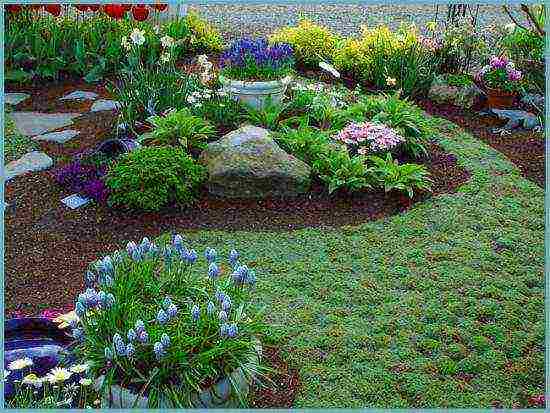

Thyme in landscape design
Thyme creeping with its powerful aroma attracts a large number of butterflies, bees and other pollinating insects. Therefore, it can be planted next to cucumber beds. Flying to the smell of thyme, the bees will help pollinate the rest of the vegetable crops.
Thyme or Bogorodskaya grass is the main component in the composition of bouquets made for the feast of the Holy Trinity. Such bundles also include wormwood, mint and lovage. Since ancient times, it was believed that the combination of their aromas would drive away all evil spirits from the dwelling.
Seed thyme
To grow a spicy plant at home, there is absolutely no need to spend money on the purchase of seedlings, which, by the way, will still have to be searched thoroughly. It is much easier to use seeds for this. Thyme planted in a pot will grow normally on a sunny balcony, as well as on a windowsill, provided a regular ventilation regime is provided.
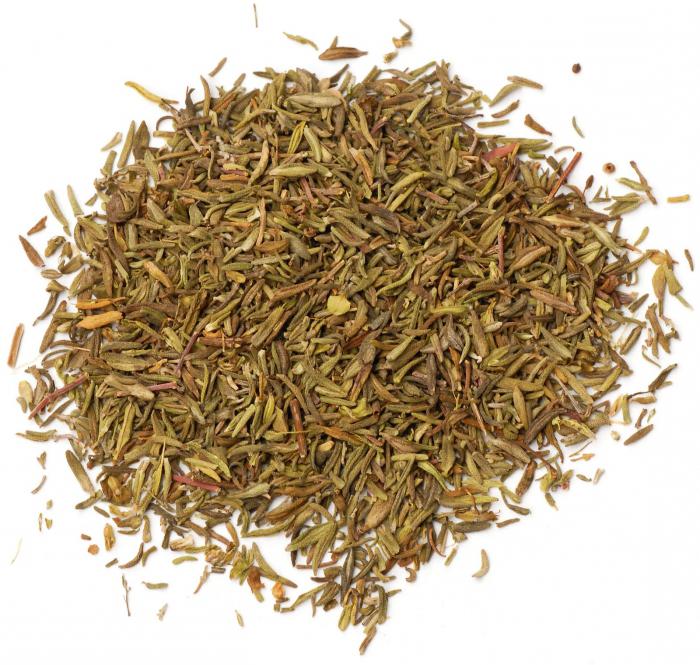

Thyme seeds
The shrub has a small root system, making it an ideal spice for home growing. Thyme on the window will also be aesthetically pleasing. Its flowers will delight the eye, and its sophisticated aroma will delight the sense of smell.
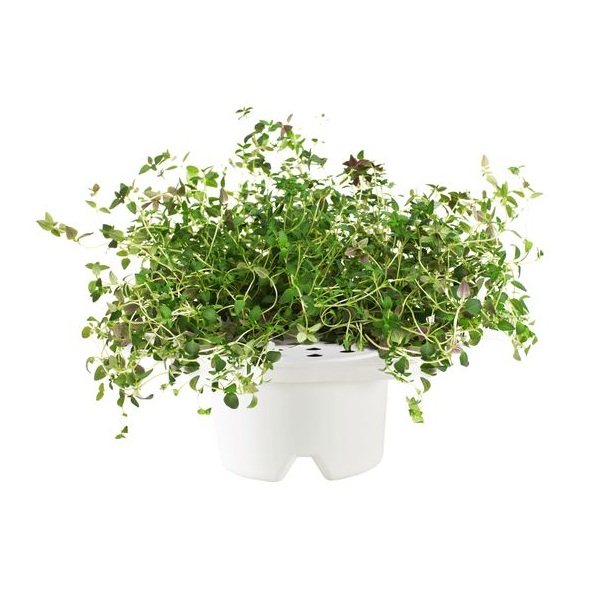

Thyme is ideal for growing on a windowsill
Action plan:
1. Prepare a small pot, 15 centimeters deep.
2. Cover the bottom with drainage. A two-centimeter layer is enough.
3. Prepare the soil. We mix it with vermiculite.
4. Moisten the soil from the spray bottle and place it over the drainage.
5. Shade the pot until the first growth appears. This will help the sprouts to grow stronger and not burn out in the sun.
Thyme seed germination is excellent, so you can leave the strongest sprouts for divorce, and remove the rest.
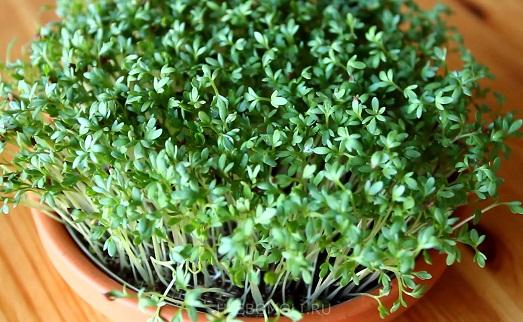

Thyme is ideal for growing at home

